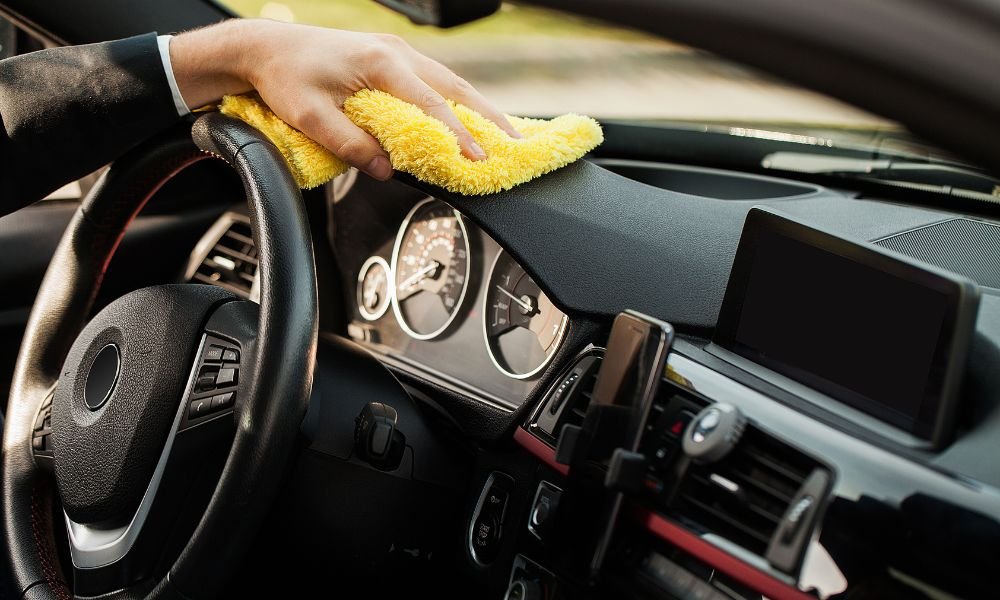Why Your Ball Joint Failed and How to Replace It
The Drive and its partners may earn a commission if you purchase a product through one of our links. Read more.
Over time, parts of your fancy new car will start to break down and cause problems. Some of them are easy, some are extremely difficult to do at home, and some are expensive. Ball joints fall right in the middle of that spectrum. They’re not super expensive but may tax the home mechanic’s skills and equipment.
The Drive’s editors have done their fair share of home ball joint repairs, and they’re here to tell you that, unless you are extremely confident in your skills and equipment, it’s best to pay someone the little bit of cash that it’ll take to do the repairs.
But for those still weighing their options, we’re here to answer the question, what does a ball joint do, exactly? Why do they break? And why is it best to entrust someone with the tools to fix it? In this post, we’ll dive into the details and help lay the foundation for your successful repair job. Stick with us, and you’ll have a solid understanding of ball joint basics in no time.
Let’s dive in.
What Is a Ball Joint?
In cars, ball joints consist of a spherical bearing that moves inside a small socket. They are used to connect control arms to steering knuckles. When they start to fail, they can allow movement in directions that are not conducive to safe steering and handling.
What Causes Them To Wear Out?
The underside of your vehicle is exposed to everything. Dirt, grime, oil, salt, and anything else on the road can make its way into the ball joint and lead to a loss of lubrication. Ball joints can also rust and deteriorate, which will cause unintended movement and looseness.
Can I Drive With a Bad Ball Joint?
No. You should not drive with a bad ball joint. Continuing to drive can cause damage to other vehicle components and if the joint fails completely you could lose control of the vehicle, leading to a crash and injuries.
Okay, How Much Is This Going To Cost To Fix?
Replacing a ball joint won’t break the bank. The joints themselves cost less than $100 each, while the labor to install them can come in as low as $100. Large trucks and high-end vehicles may carry a higher replacement cost, but you’re still not looking at a major repair cost.
Can I Replace a Ball Joint Myself?
You absolutely can, but the process can be taxing for beginners, especially since you need a press to get the ball joint into the receiver. If you’re dead set on doing the work yourself, grab a maintenance manual for your vehicle and study the construction, as well as the tools you’ll need to do the job. In some cases, it’s likely that just paying someone to do the work will be cheaper, especially if you’re lacking tools and a safe space to do the repair.
Ball Joint Terms You Should Know
Get educated!
Control Arm
Control arms connect the front wheels to the car. One side of the control arm is connected to the wheel assembly and the other is connected to the car’s frame.
CV Joints
CV joints, or constant velocity joints, connect the transmission to the wheels. They are part of the driveshaft and are mostly seen on front-wheel drive vehicles, though they can show up on other drive types as well.
Suspension
The suspension system in a vehicle is used to keep the ride comfortable while keeping the tires in constant contact with the road. The shocks, struts, and other components all work together to help the vehicle stay planted and safe over rough roads and while driving around corners and curves.
FAQs About Ball Joints
You’ve got questions, The Drive has answers!
Q: Should I Replace All Ball Joints at the Same Time?
A: Plenty of mechanics will recommend that you replace both the upper and lower ball joints at the same time. They may also recommend checking related components at the same time, such as the stud hole in the steering knuckle.
Q: How Long Should Ball Joints Last?
A: A ball joint’s lifespan will depend heavily on the type of vehicle and the kinds of driving it’s subjected to. In general, you can look to get at least 70,000 miles out of a ball joint before it needs replacement.
Q: Do Some Ball Joints Last Longer Than Others?
A: Yes. Depending on the location of the joint, some may fail more quickly than others. This is especially true if the joint is load-bearing.
Q: Do Ball Joints Need To Be Pressed?
A: They do, but depending on your vehicle and the way it was constructed, you may be able to find ways around it. The Drive’s editors have experience with the workarounds and are here to tell you to have someone else do the work for you, if at all possible.
Let’s Talk, Comment Below To Talk With The Drive’s Editors!
We’re here to be expert guides in everything How-To related. Use us, compliment us, yell at us. Comment below and let’s talk! You can also shout at us on Twitter or Instagram, here are our profiles.
Jonathon Klein: Twitter (@jonathon.klein), Instagram (@jonathon_klein)
Tony Markovich: Twitter (@T_Marko), Instagram (@t_marko)
Chris Teague: Twitter (@TeagueDrives), Instagram (@TeagueDrives)
Toni Scott: Twitter (@mikurubaeahina), Instagram (@reimuracing)


